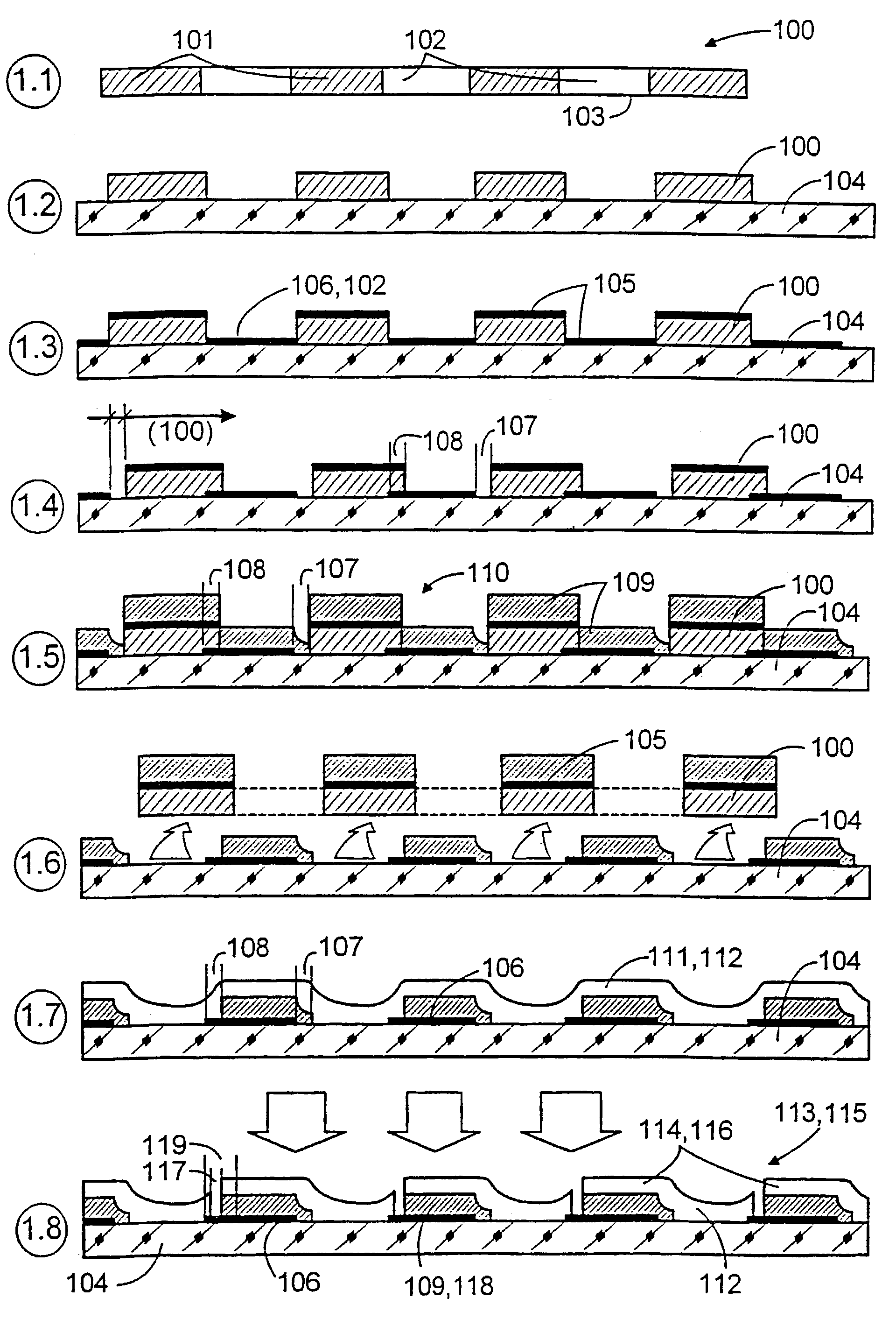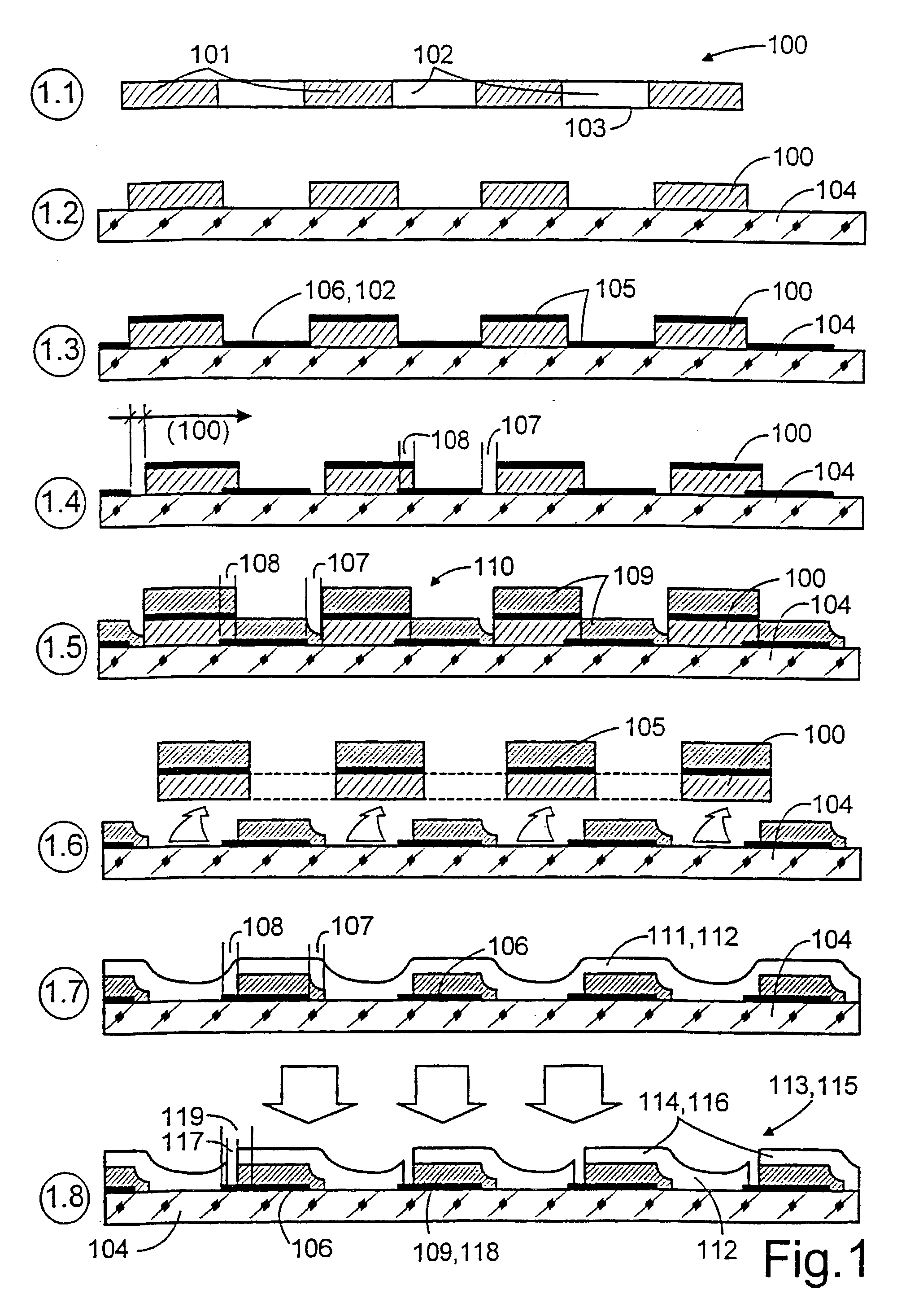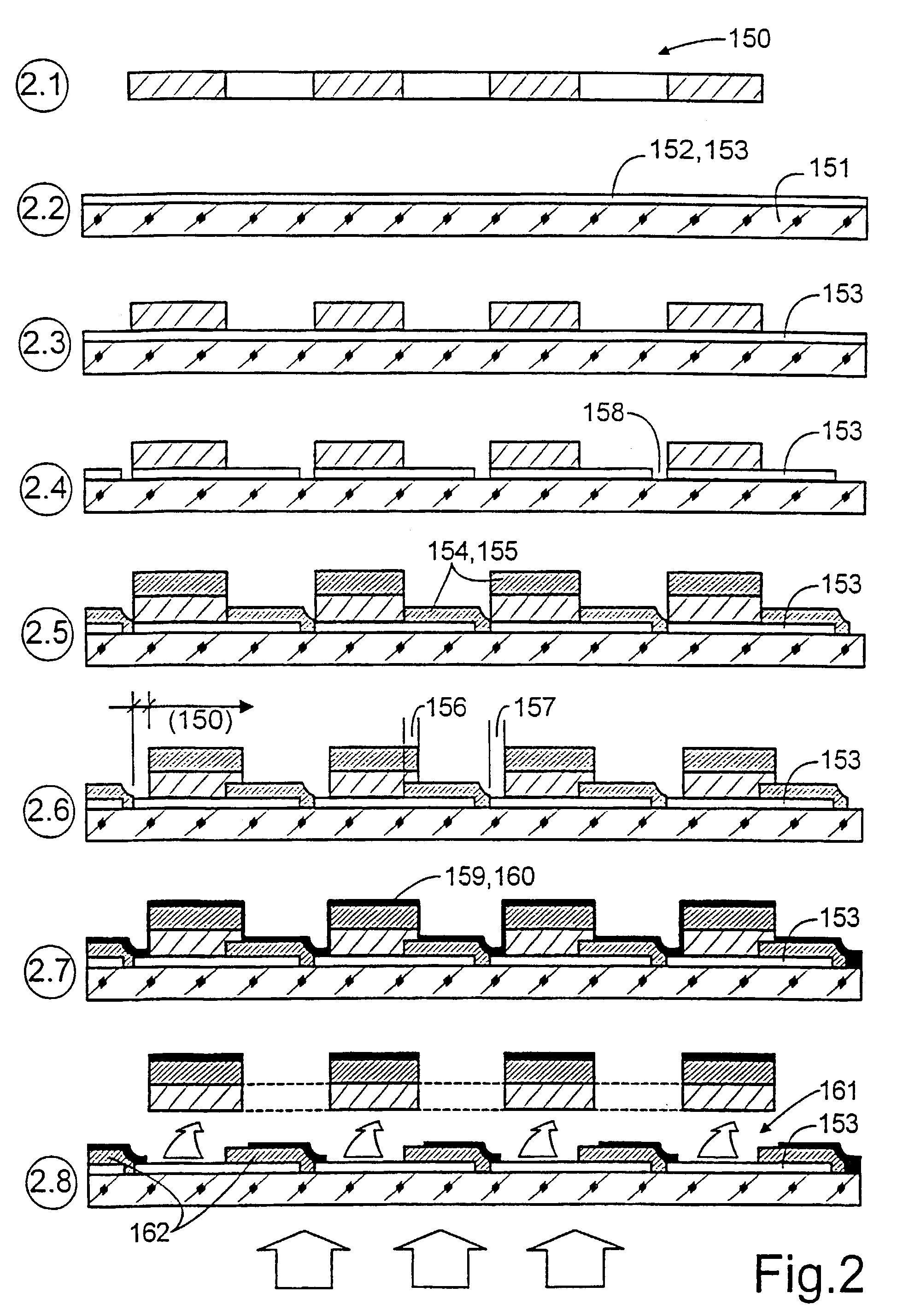Method for producing a solar module with thin-film solar cells which are series-connected in an integrated manner and solar modules produced according to the method, especially using concentrator modules
- Summary
- Abstract
- Description
- Claims
- Application Information
AI Technical Summary
Benefits of technology
Problems solved by technology
Method used
Image
Examples
Embodiment Construction
[0031]In FIG. 1 the method in accordance with the invention is depicted on the basis of selected states of fabrication of an embodiment of a solar module to be fabricated shown in cross section. A thin-film mask 100 corresponding to the desired geometry and adhering to the predetermined marginal conditions is fabricated in a first method step 1.1. The embodiment shown is one of comb-like geometry having filled surfaces 101 and blank surfaces 102 of identical size. Connecting ribs 103 in the geometric pattern lie outside of the solar cell structure to be fabricated and are not given further consideration. In a method step 1.2 the mask 100 is releasably fixed on a transparent substrate layer 104 of glass. In a next method step 1.3 a metal layer 105 is applied to the substrate layer 104 and the fixed mask 100. This leads to the formation on the substrate layer 104 of a rear electrode 106 structured in stripes shaped like the blank spaces 102 in the geometric pattern of the mask 100. In...
PUM
 Login to View More
Login to View More Abstract
Description
Claims
Application Information
 Login to View More
Login to View More - R&D
- Intellectual Property
- Life Sciences
- Materials
- Tech Scout
- Unparalleled Data Quality
- Higher Quality Content
- 60% Fewer Hallucinations
Browse by: Latest US Patents, China's latest patents, Technical Efficacy Thesaurus, Application Domain, Technology Topic, Popular Technical Reports.
© 2025 PatSnap. All rights reserved.Legal|Privacy policy|Modern Slavery Act Transparency Statement|Sitemap|About US| Contact US: help@patsnap.com



